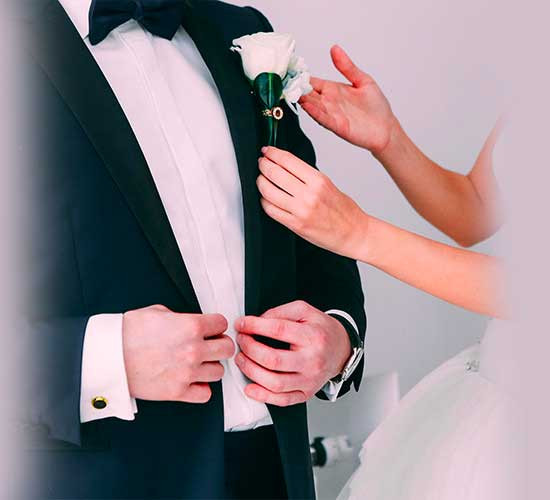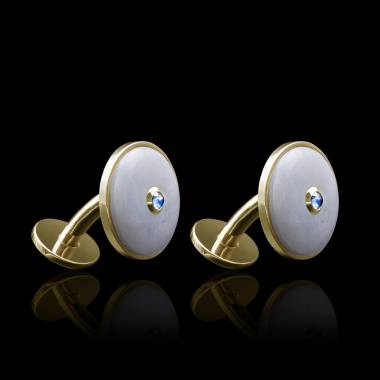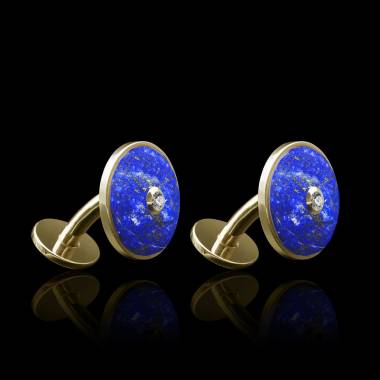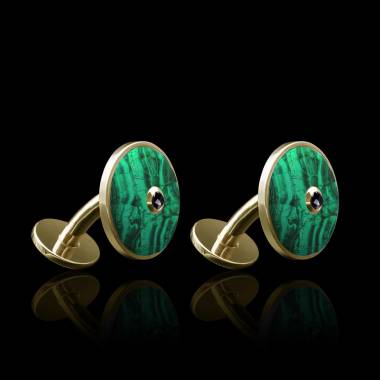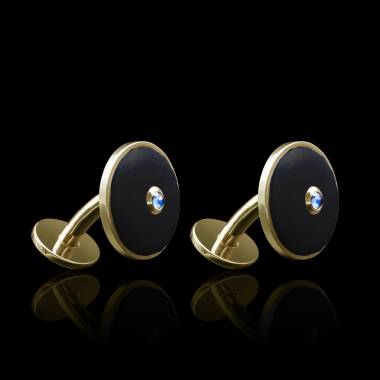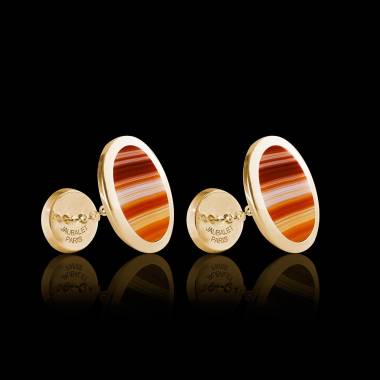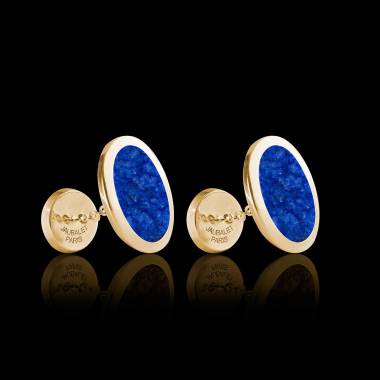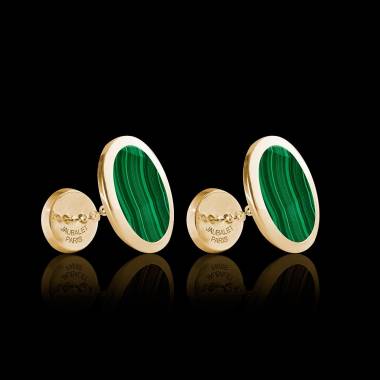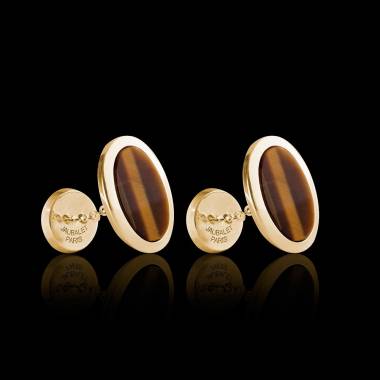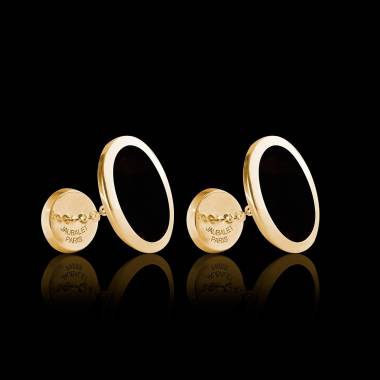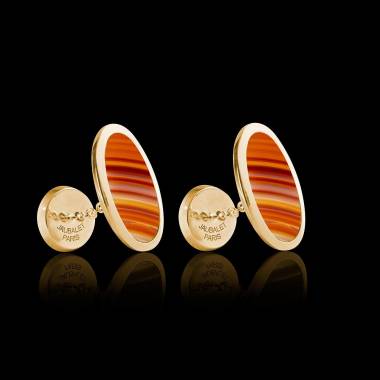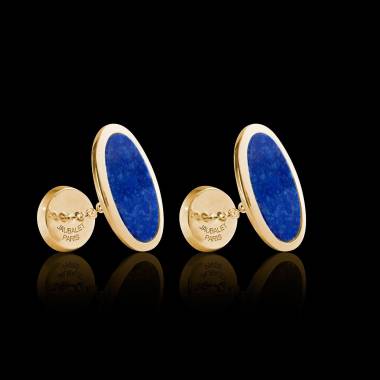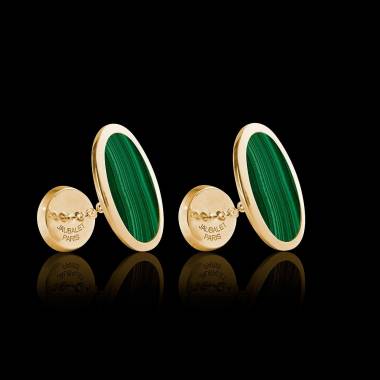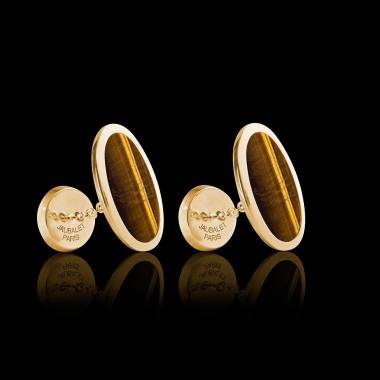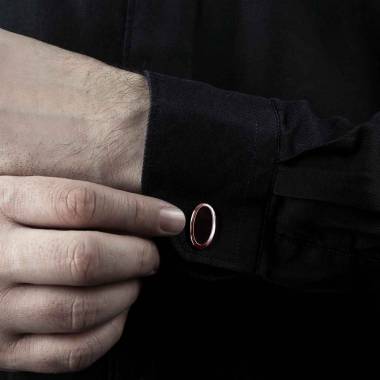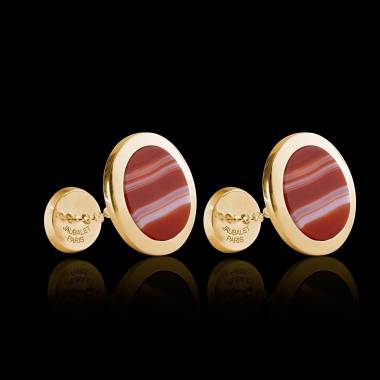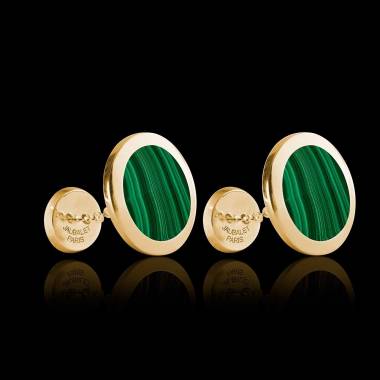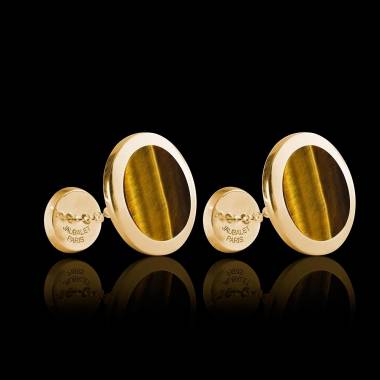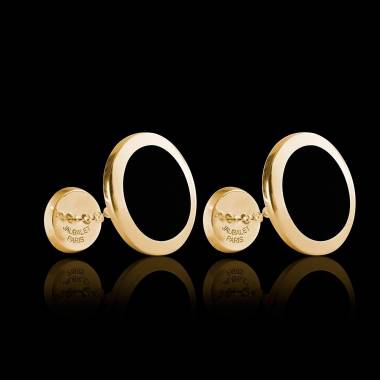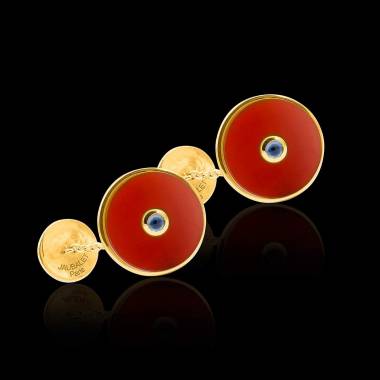The History of Yellow Gold Silver-Gilt Cufflinks
Silver-gilt has existed since antique times, as gold-gilded silver objects have been found from the Pre-Colombian era or jewelry from ancient Greek and Roman populations. Numerous ancient peoples used their own gilding techniques. The Incas gave real meaning to gold and silver because these two metals represented respectively the sun and the moon. They used a plating technique that aimed to remove in order to guarantee the quality of the gold plating on silver. Mercury gilding was used in the 18th century before electroplating existed but was quickly abandoned due to its high toxicity for the workers.
The Advantage of Yellow Gold Silver-Gilt Cufflinks
When the price of gold soars, jewelry lovers rush to pieces in silver-gilt as the visible difference between silver-gilt and gold is barely noticeable, which makes silver-gilt a perfect substitute for gold. Moreover, the price of silver-gilt makes it quite affordable. Its advantages don’t stop there. It is lighter than gold and the presence of silver and gold makes it a hypoallergenic metal thus avoiding an allergic reaction. The durability of silver-gilt has been proven. Silver-gilded objects dating back to antique times have been found in an almost perfect state. Silver-gilt resists shocks, scrapes, and scratches. It’s quite understandable that this miraculous metal appeals to so many people. Discover our custom-made Yellow Gold Silver-Guilt Cufflink art collection.
Jaubalet Paris: Buying Guide
Virtues of the Cufflinks
Yellow Gold Silver-Gilt Cufflinks are used to attach mousquetaire-type shirtsleeves. They were formerly made of two buttons connected by a chain. Today many different types of cufflinks exist: silk or cotton knots, stud/button cufflinks, bullet back and toggle closure cufflinks, locking cufflinks. There are also many different materials including silver, brass, rhodium-plated cufflinks, palladium, mother of pearl, crystal, and what interests us here silver-gilt. Vermeil* or silver-gilt is a precious metal and is made of solid metal covered with a layer of gold i.e. gold-plated silver. Silver-gilt is obtained following a chemical process called electroplating which consists of applying a thin layer of gold on solid silver. The quality of the gold used is subject to different legislation depending on the country. In France, the gold must be 75% pure and at least 5 microns thick. Jewelry obtained this way is durable, wear-resistant, and maintains its luster longer. In addition, it does not tarnish and is scratch-resistant.
Taking care of your cufflinks
Vermeil, also known as silver-gilt, results from a chemical process and therefore requires special care. Abrasive products may scratch the surface or remove a layer of gold. To care for your yellow gold silver-gilt cufflinks, delicately rub them with a soft cloth and soapy water, rinse then dry them. If your cufflinks are very dirty, rubbing alcohol can also be used. Mix 4 drops of warm water with one drop of alcohol and as above use, soft cloth dipped in the solution, rinse and dry. White wine vinegar and warm water can be used as well. Quickly rinse after cleaning it with the vinegar solution. Cover yellow gold silver-gilt cufflinks with bees’ wax to better protect them.













